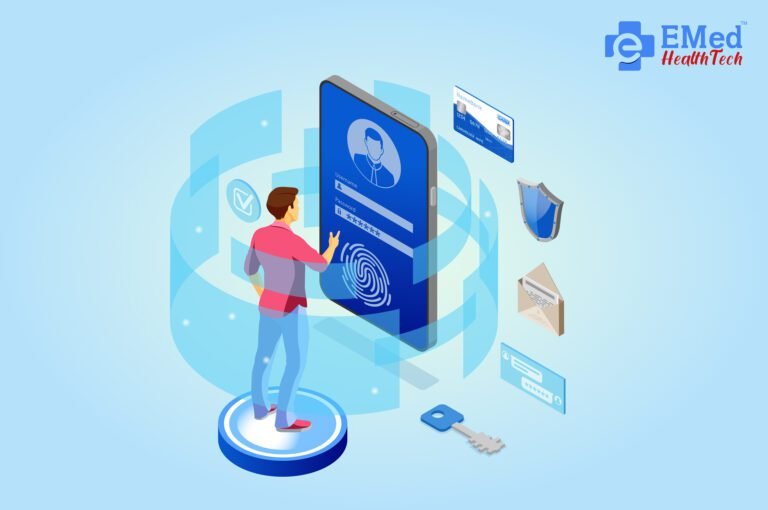Ami Kothari
Access to healthcare is a basic human right, yet it can be a significant challenge for many women living in rural areas. Rural areas are often far from hospitals and clinics, and transportation can be a major hurdle. This can make it difficult for women to get the care they need, particularly those living with chronic conditions or undergoing pregnancy.
However, telemedicine app is changing the game by bringing healthcare to the patient’s doorstep. In this article, we’ll explore how telemedicine empowers women in rural areas by making healthcare accessible, affordable, and convenient. We’ll also discuss how telemedicine is used to safeguard women’s health in rural areas.
4 Major Challenges in Women’s Healthcare in Rural Areas
Living in a rural area can present unique challenges when it comes to accessing healthcare, particularly for women. This is a universal phenomenon due to dominant social and cultural norms which put women at a disadvantage.
While urban areas have many healthcare facilities and specialists, those living in rural areas may not have the same level of access. As a result, women in rural areas often face various challenges when it comes to maintaining good health.
1. Lack of Healthcare Facilities
One of the most significant challenges women face in rural areas is the lack of healthcare facilities. Many rural areas have a limited number of hospitals, clinics, and medical centers, making it difficult for women to access healthcare services. This can be particularly challenging for women who require specialized care, such as obstetricians and gynecologists.
2. Shortage of Healthcare Professionals
Another challenge in rural areas is the shortage of healthcare professionals. Many healthcare professionals choose to work in urban areas, leaving rural areas with few doctors and nurses. This can make it difficult for women in rural areas to find healthcare providers who specialize in women’s health.
3. Limited Access to Specialized Care
In addition to the shortage of healthcare professionals, women in rural areas may have limited access to specialized care. For example, women who require advanced diagnostic testing for specialized surgery may need to travel long distances to access these services. This can be particularly challenging for women who do not have access to reliable transportation or who cannot afford to travel.
4. Socio-Economic Factors Affecting Women’s Health
Finally, socio-economic factors can also impact women’s health in rural areas. Women in rural areas may be more likely to live in poverty, making it difficult to access healthcare services. Additionally, women in rural areas may have limited access to healthy food options or safe places to exercise, contributing to various health issues.
4 Key Benefits of Telemedicine in Women’s Healthcare

Telemedicine has revolutionized healthcare delivery, especially in rural areas where accessing quality healthcare services has always been challenging. It plays a crucial role in improving the overall health and well-being of rural women. There are some significant benefits of telemedicine in virtual healthcare. Here are some of them:
1. Improved access to healthcare services
Telemedicine improves access to healthcare services that’s why it is a must for quality healthcare. Women living in rural areas often lack access to primary care physicians, let alone specialists, due to a shortage of healthcare facilities and professionals. Telemedicine eliminates this barrier by providing remote access to healthcare services, enabling women to consult doctors and specialists regardless of location.
2. Reduced travel time and costs
Women in rural areas often travel long distances to access healthcare services, which can be costly and time-consuming. With telemedicine, patients can access care from the comfort of their homes, eliminating the need for travel and reducing costs associated with transportation, accommodation, and other related expenses.
3. Increased availability of specialized care
Another benefit of telemedicine is that it increases the availability of specialized care. Rural areas often lack specialized healthcare services due to a shortage of trained professionals. With telemedicine, women can access specialized care from remote locations, receiving timely and effective treatment for conditions that would otherwise go untreated.
4. Improved patient outcomes
By providing remote access to healthcare services, women living in rural areas can receive timely and effective care for a wide range of conditions, including chronic diseases, mental health issues, and maternal and child health. Telemedicine allows healthcare providers to monitor patients’ health status remotely, enabling them to detect and address health issues before they become severe.
Few Examples of Telemedicine in Women’s Healthcare

As Teleconsultation is shaping the future of healthcare, we can expect much from Telemedicine and Telehealth in 2023 and beyond. Here are some examples of telemedicine making an impact on the health of rural women.
Teleconsultations for gynecological and obstetric care
– Teleconsultations allow women in rural areas to consult with gynecologists and obstetricians without traveling, saving them time and money.
– With telemedicine, healthcare professionals can diagnose and treat various conditions such as irregular menstrual cycles, urinary tract infections, and abnormal Pap test results.
– Women can also receive guidance on family planning, pregnancy-related issues, and menopause through teleconsultations.
Remote monitoring of high-risk pregnancies
– Telemedicine helps pregnant women in remote areas receive timely and appropriate care, reducing the risk of complications.
– Healthcare professionals can monitor vital signs, fetal development, and other parameters through remote monitoring devices.
– Women can also receive guidance on proper prenatal care and nutrition through telemedicine.
Telemedicine for mental health services
Though there are some challenges in Telemental health, they can be overcome.
– Telemedicine helps women in rural areas access mental health services without needing travel, which can be especially beneficial for those with limited mobility or transportation.
– Women can receive counseling for various mental health issues, including depression, anxiety, and postpartum depression.
– Healthcare professionals can also provide support for coping with domestic violence, sexual abuse, and other traumatic experiences.
Telemedicine for preventive care
– Telemedicine enables women to receive regular preventive care services such as mammograms, Pap tests, and STD screenings without traveling long distances to a healthcare facility.
– Healthcare professionals can also provide guidance on healthy lifestyle choices, such as proper nutrition and exercise.
– This service helps women in rural areas stay proactive about their health, reducing the risk of developing serious health conditions.
Challenges in Telemedicine Implementation
Telemedicine sounds like the ideal solution. However, it is plagued by obstacles that prevent its effective implementation.
In rural areas, the lack of infrastructure and technology can create obstacles to providing telemedicine services. Additionally, limited healthcare resources, including trained healthcare professionals, equipment, and medication, can make it difficult to implement telemedicine successfully. There is a need for policy changes and regulations to ensure that telemedicine is integrated into the healthcare system in rural areas, providing reliable and accessible healthcare services to women. By addressing these challenges, telemedicine can play a crucial role in safeguarding women’s health in rural areas, particularly those who face difficulties in accessing healthcare services.
Summing Up
Telemedicine is a promising solution to improve healthcare access and quality for women in rural areas. It offers a solution to bring in much-needed access to healthcare for women and thereby uplift society as a whole. Despite the challenges that pave the way, telehealth stands as a beacon of hope for rural women.
If you want to integrate telemedicine into your healthcare practice, EMed HealthTech provides custom telehealth app development services that can help you provide remote care to your patients. With our expertise in developing HIPAA-compliant telemedicine apps, we can create a personalized telehealth solution for your practice to ensure that you can offer high-quality care to your patients, no matter where they are located.
Related posts

Telemedicine
Telemedicine App Development Strategies for Protecting Patient Data
Data Security in Telemedicine Apps: Strategies for Protecting Patient Information
Read more
Telemedicine
The Telemedicine Rising: Build Successful Apps for Remote Care
The Telemedicine Rising: Build Successful Apps for Remote Care
Read more
Telehealth
Telehealth in Your Hands: Creating Telemedicine Apps for the Future
Telehealth in Your Hands: Creating Telemedicine Apps for the Future
Read more







